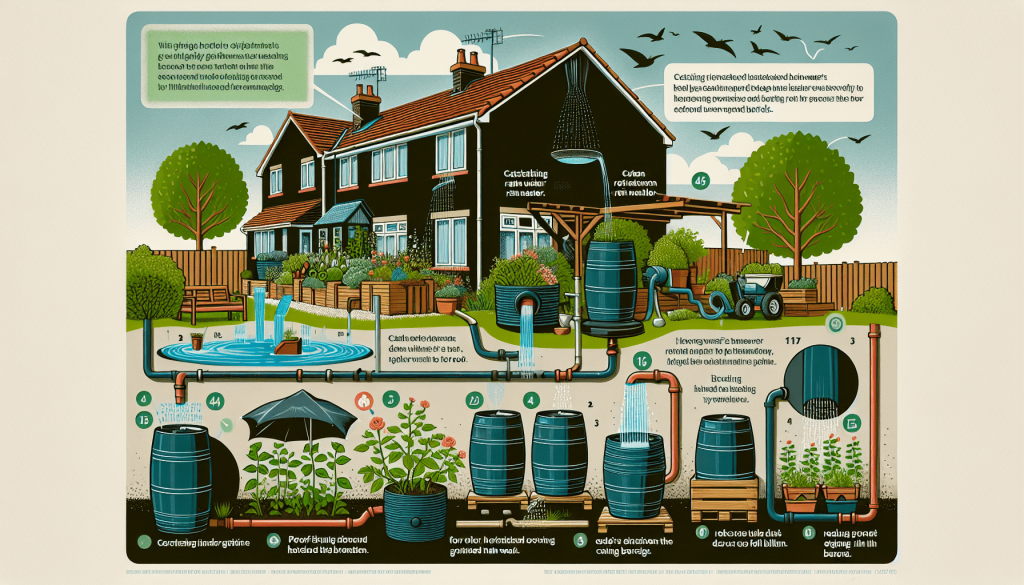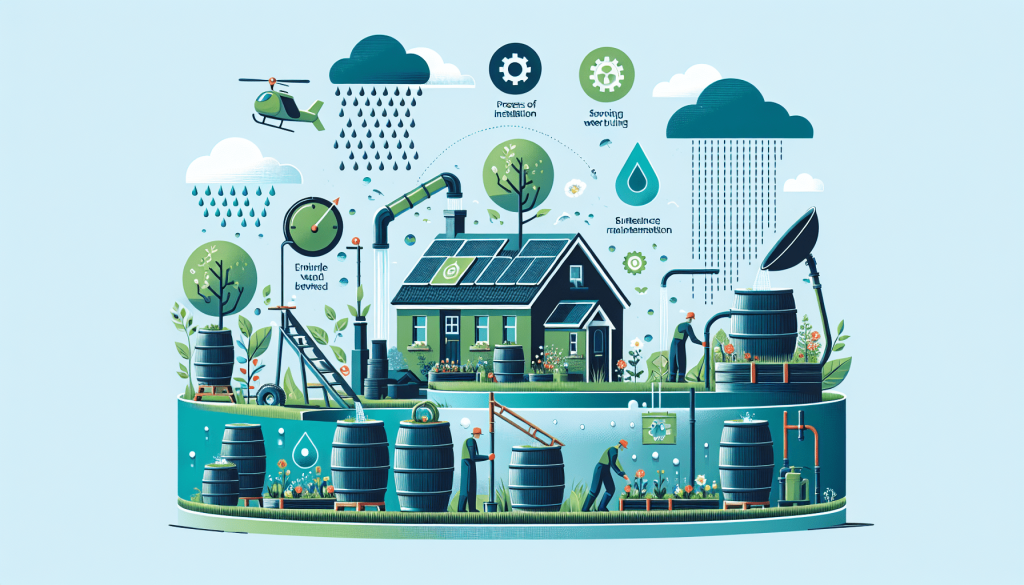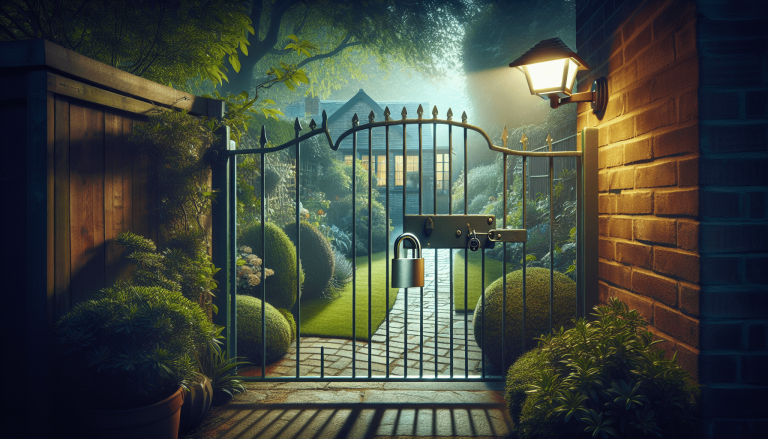Are you looking to make your garden more eco-friendly and reduce your water bills? Rain barrels may be the answer you need! In the UK, rain barrels have become increasingly popular, allowing homeowners to collect rainwater and use it for various outdoor purposes. However, it’s important to follow best practices to ensure you’re utilizing rain barrels effectively and safely. From choosing the right location to filtering the water, this article will guide you through the key practices to make the most out of rain barrels and help you make a positive impact on the environment.
Table of Contents
ToggleChoosing the Right Rain Barrel
Determine the desired size
When choosing a rain barrel, it is crucial to determine the desired size based on your specific needs. Consider factors such as the average rainfall in your area, the size of your roof, and the amount of water you intend to collect. Larger rain barrels can hold more water, allowing you to collect a significant amount during heavy rainfall. However, keep in mind that larger barrels may require more space and they can become heavy when full.
Consider the material
Rain barrels are available in various materials, including plastic, wood, and metal. Each material has its own advantages and disadvantages. Plastic barrels are lightweight, durable, and affordable, making them a popular choice. Wood barrels provide a more aesthetically pleasing look but require regular maintenance to prevent rotting. Metal barrels are durable but can be prone to rust. Consider the climate, your aesthetic preferences, and the durability of the material when choosing the right rain barrel for you.
Check for a screen or filter
A screen or filter is an essential component of a rain barrel as it prevents debris, leaves, and insects from entering the barrel. This helps keep the water clean and reduces the risk of clogging. Ensure that the rain barrel you choose has a screen or filter that is easy to clean and maintain.
Look for a removable lid
Having a removable lid on your rain barrel is essential for ease of cleaning and maintenance. It allows you to access the interior of the barrel to remove any debris or perform regular inspections. A removable lid also helps prevent animals from entering the barrel and nesting inside.
Placing the Rain Barrel
Position it near a downspout
When placing your rain barrel, it is important to position it near a downspout to efficiently collect rainwater from your gutters. This ensures a direct flow of water into the barrel and maximizes its capacity. Take note of any obstructions, such as trees or structures, that may affect the positioning of the barrel in relation to the downspout.
Ensure proper stability
To ensure the stability of your rain barrel, choose a flat and level surface for its placement. Uneven ground may cause the barrel to tip over or become unstable, especially when it is full of water. Consider placing the barrel on a sturdy platform or using a rain barrel stand to provide additional support.
Allow for easy access
Make sure the rain barrel is placed in a location that allows for easy access. This will make it convenient for you to collect water for various purposes, such as watering plants or cleaning outdoor equipment. Consider placing the rain barrel near a water source, such as a hose or watering can, to facilitate easy usage.
Consider the surrounding environment
Take into account the surrounding environment when placing your rain barrel. Avoid placing it under trees, as falling leaves or branches can clog the gutters and impact the water quality. Additionally, consider the aesthetics of the area and choose a location that blends well with your landscape.
Connecting the Rain Barrel to Gutters
Measure the downspout size
Before connecting your rain barrel to the gutters, it is crucial to measure the size of your downspout. This will help you determine the appropriate connection method and ensure a proper fit. Take accurate measurements of the width and height of the downspout to select the correct adapters or diverters.
Install a diverter or downspout adapter
A diverter or downspout adapter is necessary to divert the water from the downspout into the rain barrel. Choose a diverter or adapter that matches the size of your downspout and allows a secure connection. It should have a valve or mechanism to redirect water either into the barrel or back into the downspout when the barrel is full.
Create a secure connection
To ensure a secure connection between the rain barrel and the gutters, use appropriate fittings and clamps. Follow the manufacturer’s instructions or consult a professional if needed. A tight and secure connection will prevent leaks and ensure that all the collected rainwater flows directly into the barrel.
Ensure proper slope for water flow
When connecting the rain barrel to the gutters, it is crucial to ensure proper slope for water flow. This allows water to flow freely from the gutters into the barrel without any blockages or backups. Position the rain barrel slightly lower than the downspout to create a natural flow of water.
Maintaining the Rain Barrel
Clean the barrel regularly
Regular cleaning of the rain barrel is essential to prevent the accumulation of algae, debris, and sediments. Empty the barrel periodically and rinse it with a mild detergent or vinegar solution. Scrub the interior walls and the screen or filter to remove any dirt or contaminants. Rinse thoroughly before refilling the barrel with fresh rainwater.
Inspect for leaks or cracks
Inspect the rain barrel regularly for any signs of leaks or cracks. Check the seams, connections, and the entirety of the barrel for any potential vulnerabilities. If you notice any damage, repair or replace the affected parts promptly to ensure the efficient functioning of the barrel.
Prevent mosquito breeding
To prevent mosquito breeding, it is essential to take measures to eliminate stagnant water and potential breeding grounds. Ensure that the rain barrel is properly sealed and does not have any openings or gaps where mosquitoes can enter. Consider adding a mosquito net or stocking to cover the screen or filter, providing an additional layer of protection.
Manage overflow during heavy rainfall
During heavy rainfall, the rain barrel may fill up quickly and overflow. It is important to manage this overflow to prevent flooding or damage to the surrounding area. Consider redirecting excess water to nearby flower beds or lawns, or use an overflow hose to guide the water away from the foundation of your home.
Using the Stored Rainwater
Use a watering can or hose
To utilize the stored rainwater, consider using a watering can or a hose with a low flow rate. This allows for precise watering, especially for delicate plants or areas that require targeted irrigation. Avoid using high-pressure hoses that may harm the plants or cause erosion in the soil.
Water plants and gardens sparingly
While it is beneficial to use rainwater for plants and gardens, it is important to water them sparingly. Only water when necessary and avoid overwatering, as this can lead to root rot and other issues. Monitor the moisture levels of the soil and adjust your watering routine accordingly.
Avoid using rainwater for edible plants
When using rainwater for watering plants, it is generally recommended to avoid using it for edible plants. Although the rainwater itself is usually clean, it may pick up pollutants and contaminants from the roof or other surfaces as it flows into the gutters. It is safer to use tap water for edible plants to minimize the risk of contamination.
Store excess water for future use
If your rain barrel fills up quickly and you have excess water, consider storing it for future use. Use additional storage containers or barrels to collect and store the excess water. This ensures that no rainwater goes to waste and can be used during dry spells or for other purposes around your home.
Protecting the Rain Barrel in Winter
Empty the barrel before freezing temperatures
To prevent damage to the rain barrel during freezing temperatures, it is essential to empty it completely before winter arrives. Water expands when it freezes, and this expansion can cause the barrel to crack or rupture. Make sure all the water is drained from the barrel to protect its integrity.
Turn the barrel upside down
After emptying the rain barrel, turn it upside down to prevent any water from collecting inside. This helps avoid freezing and eliminates the risk of ice expanding and damaging the barrel. Secure the barrel in this position to ensure it remains stable and protected during winter.
Remove and store any connected parts
Disconnect any parts that are attached to the rain barrel, such as diverters, adapters, or hoses. Store them in a dry and protected area to prevent damage or deterioration. Inspect the parts before storing and clean them if necessary to ensure they are ready for use again in the spring.
Cover the barrel or move it indoors
Consider covering the rain barrel with a protective cover to shield it from snow, ice, and other winter elements. This helps prolong its lifespan and prevents any potential damage. Alternatively, if you have the space, you may choose to move the rain barrel indoors or into a garage for added protection during the winter months.
Dealing with Potential Issues
Prevent algae growth
To prevent algae growth in your rain barrel, ensure that it is placed in a shaded area. Direct sunlight can promote algae growth, which can affect the quality of the stored water. Additionally, regularly clean the barrel and keep the screen or filter free from debris to minimize the chances of algae formation.
Address water quality concerns
If you have concerns about the water quality collected in your rain barrel, consider installing additional filtration systems or use a separate filtration device when using the water. This can help remove any impurities or contaminants that may be present in the collected rainwater.
Handle overflow or flooding
In the event of overflow or heavy rainfall causing flooding around the rain barrel, take immediate action to address the issue. Redirect excess water using overflow hoses or direct it away from areas prone to flooding. Ensure that the surrounding area has proper drainage to prevent any potential damage or safety hazards.
Address issues with installation or positioning
If you experience any issues with the installation or positioning of your rain barrel, seek help and guidance. Consulting a professional or reaching out to the manufacturer can provide valuable insight and assistance in resolving any issues you may be facing. Addressing these issues promptly will ensure the optimal functionality of your rain barrel.
Regulations and Legal Considerations
Check local regulations
Before installing a rain barrel, it is important to check your local regulations regarding their use. Some areas may have restrictions or guidelines in place that dictate the size, placement, or usage of rain barrels. Adhering to these regulations ensures that you are in compliance with the law and avoids any potential penalties or fines.
Observe water usage restrictions
In regions where water usage restrictions are in place, be mindful of how you use the water collected in your rain barrel. Follow any guidelines or limitations set by local authorities to ensure responsible water usage. By adhering to these restrictions, you contribute to water conservation efforts and demonstrate environmental responsibility.
Consider plumbing and drain laws
When connecting your rain barrel to the gutters or plumbing system, be aware of the plumbing and drain laws in your area. Some regions may have specific requirements regarding the installation of rainwater collection systems. Familiarize yourself with these laws and ensure that your rain barrel setup complies with them.
Adhere to health and safety guidelines
Ensure that your rain barrel setup adheres to health and safety guidelines to prevent any potential health risks. Keep the barrel properly sealed, maintain cleanliness, and take necessary precautions to prevent contamination or accidents. Following these guidelines ensures the safety of both the collected rainwater and anyone accessing it.
Advantages of Using Rain Barrels
Conserves water and reduces water bills
Using rain barrels helps conserve water by capturing and utilizing rainwater that would otherwise be wasted. This reduces reliance on municipal water supplies and can lead to a significant reduction in water bills. By utilizing a free and readily available water source, you contribute to water conservation efforts and save money in the process.
Provides natural, chlorine-free water for plants
Rainwater collected in barrels is free from the chemicals commonly found in tap water, such as chlorine. This makes it ideal for watering plants and gardens as it provides a natural and healthier water source. Plants often thrive when watered with rainwater, leading to healthier growth and vibrant blooms.
Reduces stormwater runoff and erosion
By collecting rainwater in barrels, you help reduce stormwater runoff. Excessive runoff can lead to erosion, flooding, and water pollution as it carries pollutants and contaminants into natural waterways. Using rain barrels helps retain rainwater on your property, allowing it to slowly infiltrate the soil and recharge groundwater supplies.
Adds ecological and sustainable practices to daily life
Implementing rain barrels in your daily life adds an ecological and sustainable practice to your routine. It demonstrates your commitment to environmental responsibility and helps create a more sustainable future. By utilizing rainwater and reducing your water consumption, you contribute to the preservation of natural resources and promote a greener lifestyle.
Conclusion
Implementing rain barrels in your UK home is an excellent way to save water, reduce water bills, and promote environmental responsibility. By following the best practices discussed throughout this article, you can ensure optimal rain barrel usage and maximize the benefits they offer. From choosing the right rain barrel to maintaining it properly, every step contributes to more efficient and sustainable water usage. Consider integrating rain barrels into your daily life and reap the numerous advantages they provide. Embrace this eco-friendly approach and make a positive impact on both your immediate surroundings and the larger environment.








